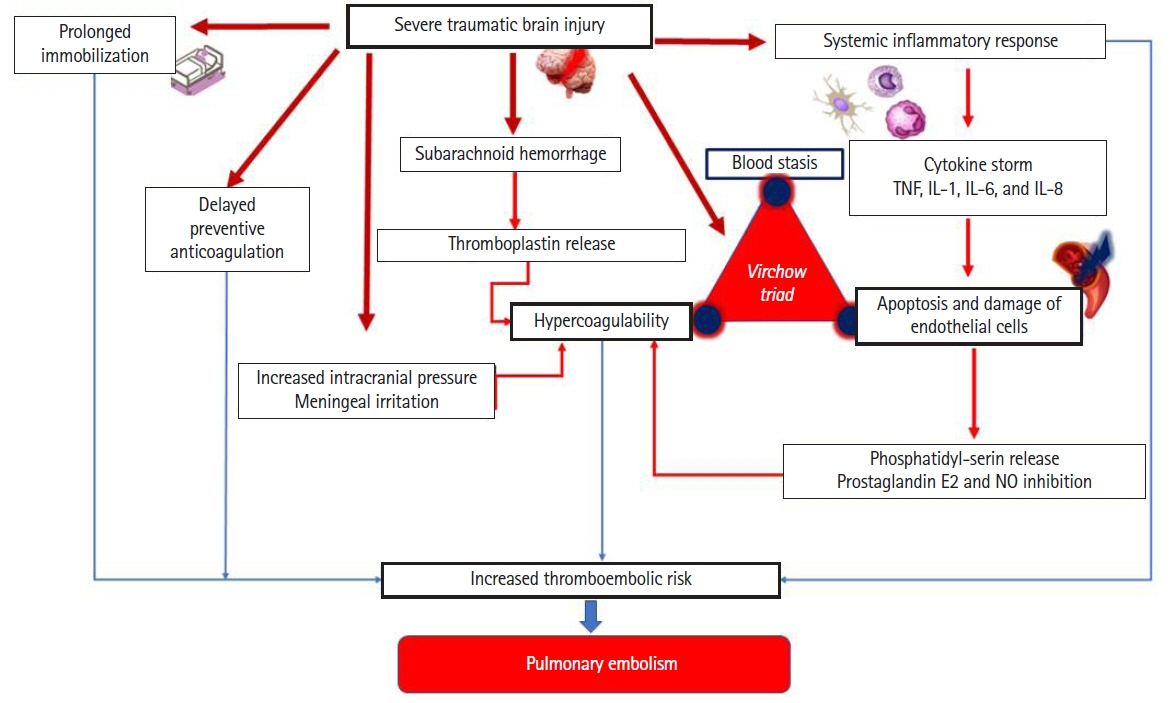Acute Crit Care.
2022 May;37(2):266-268. 10.4266/acc.2022.00374.
The role of cardiac dysfunction and post-traumatic pulmonary embolism in brain-lung interactions following traumatic brain injury
- Affiliations
-
- 1Department of Intensive Care, Habib Bourguiba University Hospital, Sfax University, Sfax, Tunisia
- KMID: 2531687
- DOI: http://doi.org/10.4266/acc.2022.00374
Figure
Reference
-
1. Chacón-Aponte AA, Durán-Vargas ÉA, Arévalo-Carrillo JA, Lozada-Martínez ID, Bolaño-Romero MP, Moscote-Salazar LR, et al. Brain-lung interaction: a vicious cycle in traumatic brain injury. Acute Crit Care. 2022; 37:35–44.
Article2. Bahloul M, Chaari AN, Kallel H, Khabir A, Ayadi A, Charfeddine H, et al. Neurogenic pulmonary edema due to traumatic brain injury: evidence of cardiac dysfunction. Am J Crit Care. 2006; 15:462–70.
Article3. Deehan SC, Grant IS. Haemodynamic changes in neurogenic pulmonary oedema: effect of dobutamine. Intensive Care Med. 1996; 22:672–6.
Article4. Bahloul M, Dlela M, Bouchaala K, Kallel H, Ben Hamida C, Chelly H, et al. Post-traumatic pulmonary embolism: incidence, physiopathology, risk factors of early occurrence, and impact outcome: a narrative review. Am J Cardiovasc Dis. 2020; 10:432–43.5. Bahloul M, Chelly H, Regaieg K, Rekik N, Bellil S, Chaari A, et al. Pulmonary embolism following severe traumatic brain injury: incidence, risk factors and impact outcome. Intensive Care Med. 2017; 43:1433–35.
Article


